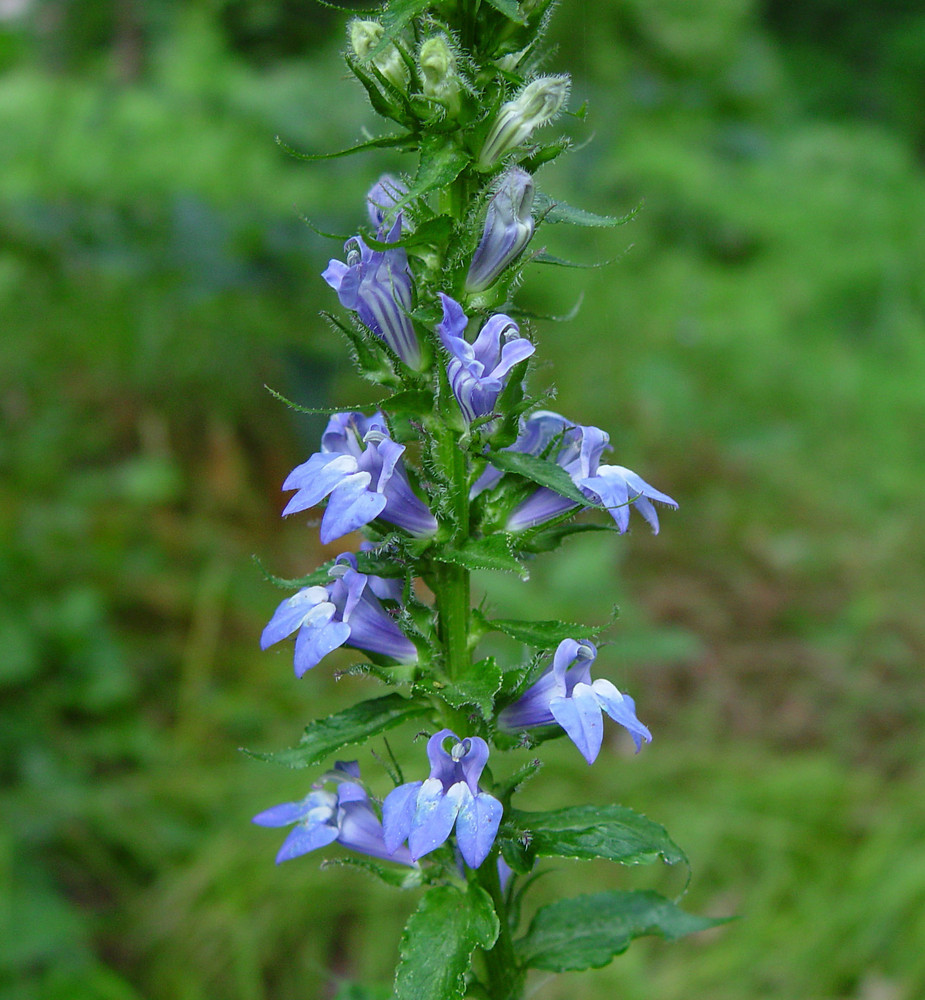It blooms from August to October.

It is a short lived perennial (with each plant living for only a few years).
Although self-compatible, a flower is unable to offer pollen to itself and it must be pollinated by insects (primarily bees in the Bombus genus).

Great lobelia is a Missouri native perennial which typically grows in moist to wet locations along streams, sloughs, springs, swamps, meadows and in low wooded areas. A clump-forming perennial which features light to dark blue, tubular, 2-lipped flowers with the three lobes of the lower lip appearing more prominent than the two lobes of the upper lip. Flowers arise from the upper leaf axils forming a dense terminal raceme atop stiff, unbranched, leafy stalks typically rising 2-3' tall. Finely-toothed, lance-shaped, light green leaves (to 5" long). Late summer bloom period. Species name of siphilitica arose from a prior medicinal use of the plant in the treatment of venereal disease. Also sometimes commonly called blue cardinal flower.
No comments:
Post a Comment